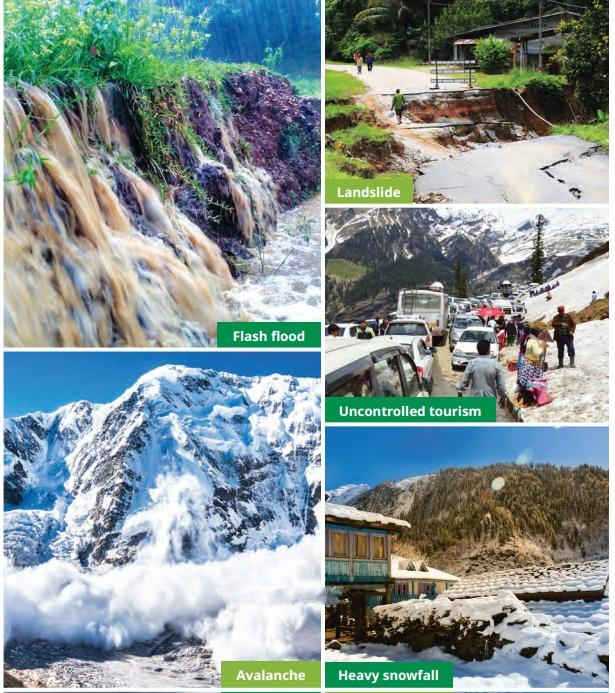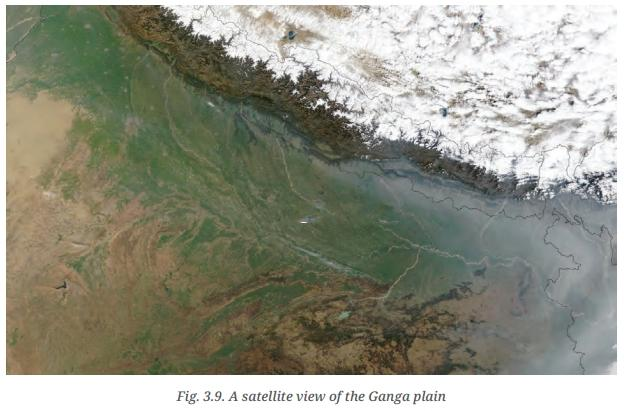How Can Landforms And Life Class 6 Questions And Answers Help You Prepare For Exams?
FAQs on NCERT Solutions for Class 6 Social Science Chapter Chapter 3 Landforms And Life
1. What are the main types of landforms explained in the NCERT Solutions for Class 6 Social Science Chapter 3?
The main types of landforms described are mountains, plateaus, plains, valleys, and deserts. Each landform has distinct characteristics, origins, and supports different human activities, as highlighted in the NCERT solutions for Class 6 Social Science Chapter 3.
2. How do landforms impact human life as discussed in Class 6 Social Science Chapter 3 NCERT Solutions?
Landforms affect settlement, agriculture, and daily activities. For example:
- Plains: Fertile for farming, support dense populations
- Mountains: Offer resources but present challenges for transportation
- Plateaus: Good for grazing/mining, less for crops
- Deserts: Sparse water, adaptation required
3. Describe one FUQ: Why do people choose to live in the mountains despite the challenges mentioned in the NCERT Solutions for Class 6 Social Science Chapter 3?
According to Chapter 3, people live in mountains for natural beauty, resources, community ties, and unique culture. Benefits include access to water/minerals, tourism, and a cleaner environment, outweighing tough terrain and weather for many.
4. What are the opportunities and challenges faced by humans in plateaus as per Class 6 Social Science Chapter 3 solutions?
- Opportunities: Rich in minerals, suitable for livestock grazing, often have scenic locations
- Challenges: Less fertile soil, limited water bodies, not ideal for large-scale farming
5. FUQ: How does understanding different landforms help in environmental conservation according to NCERT Solutions Class 6 Social Science Chapter 3?
By studying landforms, students learn how to plan conservation strategies specific to each terrain, manage natural resources wisely, and address environmental risks like flooding or erosion.
6. What distinguishes a mountain from a plateau based on NCERT Solutions for Class 6 Social Science Chapter 3 Landforms and Life?
Mountains are high, steep landforms with pointed or rugged peaks; plateaus are flat-topped elevated areas rising sharply on at least one side but generally flatter on top. Both have different impacts on human activities and climate.
7. FUQ: What might happen if rivers did not bring sediments to plains, as explained in NCERT Solutions for Class 6 Social Science Chapter 3?
Without river-borne sediments, plains would be less fertile, leading to poor crop yields and less productive agriculture, which could impact food supply and settlements.
8. Explain how deserts support adapted flora and fauna, as stated in Class 6 Social Science NCERT Chapter 3 solutions.
Deserts, though harsh, are home to unique plants and animals that evolve special features—for example, camels store water, and cacti reduce leaf area to conserve moisture, allowing survival in arid conditions.
9. FUQ: In what ways do landforms influence local climate and weather according to NCERT Solutions for Class 6 Social Science Chapter 3?
Landforms affect climate patterns:
- Mountains block wind/rain (creating rain shadows)
- Deserts tend to have extreme temperatures
- Plains experience moderate, stable climates
10. How are mountains and hills similar and different, according to the solutions to NCERT Class 6 Social Science Chapter 3?
Both are elevated landforms, but mountains are higher and steeper. Hills are low-elevation uplands. They belong to the same landform type but vary in size and impact.
11. FUQ: What could be some misconceptions students have about deserts as per NCERT Class 6 Social Science Chapter 3 solutions?
A common misconception is all deserts are hot. The chapter clarifies that some deserts are cold, like the Gobi, and each has distinct flora and fauna adapted to arid climates.
12. Which landforms are connected with major tourism or pilgrimage sites in India, as discussed in the NCERT Solutions for Class 6 Social Science Chapter 3?
Mountains (Shimla, Vaishno Devi), plains (Agra, Varanasi), plateaus (Munnar), deserts (Jaipur), and valleys (Rishikesh) are all associated with famous Indian tourist and pilgrimage destinations, showing the cultural importance of different landforms.
13. How is your locality’s landform identified using the approach described in Class 6 Social Science Chapter 3 NCERT Solutions?
Students are guided to observe features like flatness (plain), elevation (mountain/plateau), river proximity, and vegetation to classify their surroundings, connecting real-life geography with textbook learning.
14. FUQ: What strategies can help people adapt to the challenges of living in valleys, according to NCERT Solutions for Class 6 Social Science Chapter 3?
Adaptation strategies include building flood-resistant homes, diverse crop planting, and efficient water management, as detailed in the solutions, to minimize risks like flooding and maximize fertile valley resources.



























